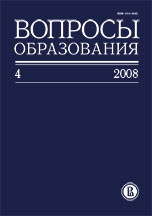Наиболее читаемые статьи этого автора (авторов)
- Марк Агранович, Возможности анализа образовательных систем на основе результатов ЕГЭ , Вопросы образования / Educational Studies Moscow: № 2 (2004)
- Марк Агранович, Последствия передачи финансирования профессионального образования на региональный уровень (на примере начального профессионального образования) , Вопросы образования / Educational Studies Moscow: № 2 (2005)
- Марк Агранович, Индикаторы в управлении образованием: что показывают и куда ведут? , Вопросы образования / Educational Studies Moscow: № 1 (2008)








